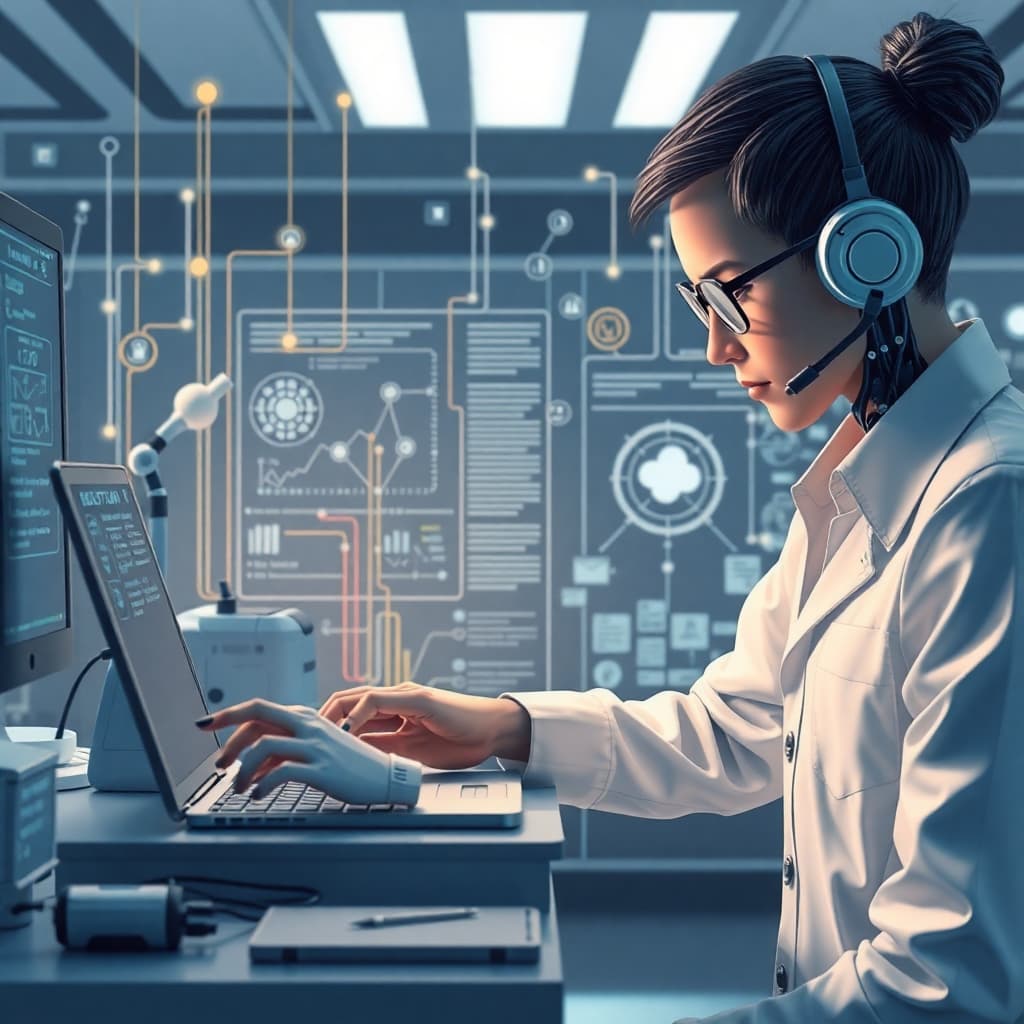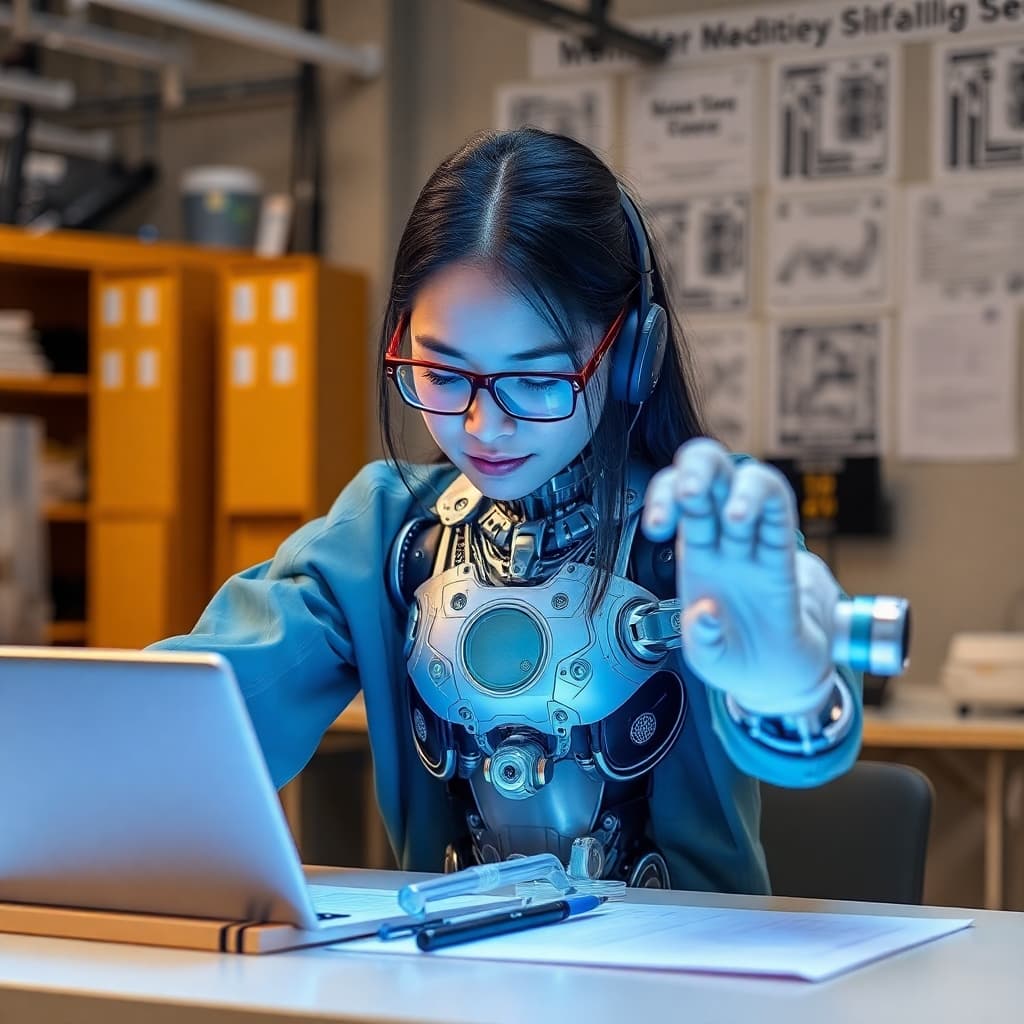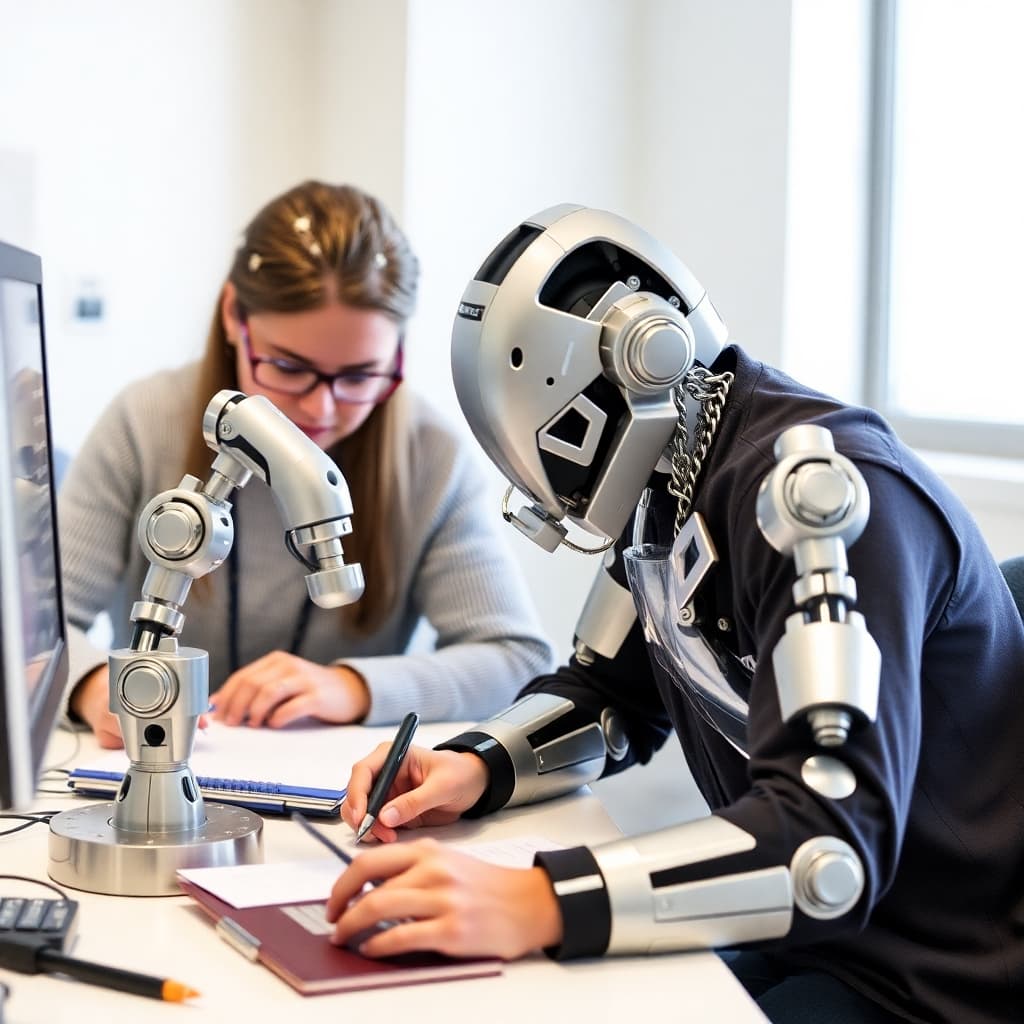AI Revolution in Language Learning: Breaking Down Global Barriers

In our increasingly interconnected world, the ability to communicate across languages is more valuable than ever. Artificial Intelligence (AI) is now at the forefront of a revolution in language learning, making it more accessible, engaging, and effective. This article explores how AI is transforming the landscape of language education and opening up new possibilities for learners around the globe.
The Challenges of Traditional Language Learning
Learning a new language has traditionally been a challenging endeavor, fraught with obstacles:
- Lack of Immersion: Limited exposure to native speakers and authentic contexts.
- Inconsistent Practice: Difficulty maintaining regular study habits.
- Generic Content: One-size-fits-all approaches that don't cater to individual interests or needs.
- Feedback Delays: Infrequent opportunities for immediate correction and guidance.
- Motivation Issues: Struggle to stay engaged with repetitive or uninteresting material.
AI-powered language learning tools are addressing these challenges head-on, creating more dynamic, personalized, and effective learning experiences.
AI-Powered Language Learning Innovations
1. Personalized Learning Paths
AI algorithms can create customized learning journeys:
- Adaptive Curricula: Adjusting lesson difficulty and content based on individual progress and performance.
- Interest-Based Content: Tailoring vocabulary and themes to the learner's personal or professional interests.
- Learning Style Optimization: Identifying and leveraging each student's most effective learning methods.
2. Intelligent Tutoring Systems
AI-driven tutors provide on-demand, personalized instruction:
- 24/7 Availability: Offering language practice anytime, anywhere.
- Adaptive Conversations: Engaging in dialogues that adjust to the learner's proficiency level.
- Pronunciation Feedback: Providing real-time correction and guidance on pronunciation.
- Grammar Explanations: Offering contextual explanations for grammar rules as they arise in practice.
3. Immersive Language Environments
AI creates more engaging and realistic language practice scenarios:
- Virtual Reality Conversations: Simulating real-life situations for practical language use.
- Augmented Reality Labeling: Overlaying foreign language labels on real-world objects for vocabulary learning.
- AI-Generated Native Speaker Interactions: Creating diverse dialogue partners for conversation practice.
4. Enhanced Speech Recognition and Synthesis
Advanced AI improves the speaking and listening aspects of language learning:
- Accent Recognition: Adapting to and providing feedback on various accents.
- Prosody Analysis: Offering guidance on intonation, stress, and rhythm in speech.
- Text-to-Speech: Generating natural-sounding speech in the target language for listening practice.
5. Intelligent Content Curation
AI can source and adapt authentic materials for language learning:
- News Article Simplification: Adjusting the complexity of current news articles to match the learner's level.
- Song Lyrics Analysis: Using popular music for engaging vocabulary and grammar practice.
- Social Media Integration: Incorporating real social media posts for contemporary language exposure.
6. Gamification and AI
Combining game elements with AI for more engaging learning experiences:
- Adaptive Challenges: Creating game-like challenges that evolve with the learner's skills.
- Intelligent Opponents: AI-powered characters that engage learners in language-based games.
- Progress Visualization: Generating motivating visualizations of language acquisition progress.
7. Cross-Lingual Information RetrievalAI enhances the ability to access and understand information across languages:
- Smart Translation: Providing context-aware translations that capture nuances and idiomatic expressions.
- Multilingual Search: Allowing learners to search for resources across multiple languages simultaneously.
- Cross-Language Summarization: Generating summaries of foreign language texts in the learner's native language.
Implementing AI-Enhanced Language Learning
To make the most of AI in language education:
- Choose Comprehensive Platforms: Look for AI-powered language learning apps that offer a range of features.
- Set Clear Goals: Define specific language learning objectives to guide AI personalization.
- Engage Consistently: Regular interaction with AI tools allows for more accurate personalization and faster progress.
- Combine with Human Interaction: Use AI as a supplement to, not a replacement for, real-world language practice.
- Provide Feedback: Many AI systems improve through user feedback, so actively engage in refining the learning experience.
The Future of AI in Language Learning
As AI continues to evolve, we can anticipate even more groundbreaking developments:
- Brain-Computer Interfaces: Direct neural feedback for more intuitive language acquisition.
- Emotion-Aware Language Tutors: AI systems that can detect and respond to the learner's emotional state, adjusting the learning experience accordingly.
- Holographic Conversation Partners: Ultra-realistic AI-driven holographic projections for immersive language practice.
Ethical Considerations
While embracing AI in language learning, it's important to address ethical concerns:
- Cultural Sensitivity: Ensure AI systems respect and accurately represent diverse cultures and dialects.
- Data Privacy: Protect learners' personal information and language usage data.
- Algorithmic Bias: Regularly audit AI systems to prevent perpetuating language or cultural biases.
- Authenticity of AI-Generated Content: Maintain transparency about the source of language examples and interactions.
Conclusion
The AI revolution in language learning is breaking down global barriers, making multilingual communication more achievable than ever before. By leveraging AI technologies, learners can now embark on personalized, engaging, and highly effective language journeys.
As we continue to explore and refine AI-enhanced language learning, we must approach its implementation thoughtfully, always keeping the focus on fostering genuine communication skills and cultural understanding. When used wisely, AI can be a powerful ally in creating a more linguistically diverse and connected world.
Embrace the potential of AI in your language learning journey, but remember that the ultimate goal is meaningful human connection across languages and cultures. Let AI be your guide and support as you explore the rich tapestry of global languages and open doors to new opportunities and perspectives.
Table of Contents
- AI Revolution in Language Learning: Breaking Down Global Barriers
- The Challenges of Traditional Language Learning
- AI-Powered Language Learning Innovations
- 1. Personalized Learning Paths
- 2. Intelligent Tutoring Systems
- 3. Immersive Language Environments
- 4. Enhanced Speech Recognition and Synthesis
- 5. Intelligent Content Curation
- 6. Gamification and AI
- 7. Cross-Lingual Information RetrievalAI enhances the ability to access and understand information across languages:
- Implementing AI-Enhanced Language Learning
- The Future of AI in Language Learning
- Ethical Considerations
- Conclusion
Related Posts

Discover how AI is transforming educational assessment, moving beyond traditional testing to provide more accurate, comprehensive, and fair evaluations of student learning.

Explore how AI is enhancing collaborative learning experiences, preparing students for the future of work through innovative group projects and team-based problem-solving.

Explore how AI is being used to develop emotional intelligence in students, creating more empathetic, self-aware, and socially skilled learners for the 21st century.

Discover how AI is breaking down barriers in education, providing personalized support for students with diverse needs and learning differences.

Discover how artificial intelligence is revolutionizing study methods, helping students learn more effectively and retain information longer.

Explore how AI is revolutionizing Science, Technology, Engineering, and Mathematics education, preparing students for the technological challenges of the future.